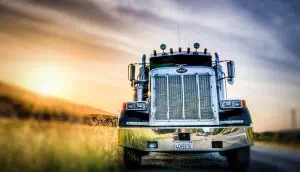FREIGHT SHIPPING GUIDE
Click on a title below to jump to that section:
Are you a new business owner that needs to ship your products to your customer? Or has your business grown to the point where you’re going to start shipping? Or are you already shipping freight, but want to do so more efficiently with a better understanding of the process?
If you answered yes to any of these questions, this guide is for you. It will introduce you to the freight shipping industry, and get you the information you need to ship like a pro.
Understanding LTL Shipping
One of the most important parts of LTL shipping is the network of carrier terminals. These terminals can range in size, but they all act as departure and arrival points for LTL freight. Unlike truckload shipping, LTL freight is not picked up and delivered on the same truck. Instead, LTL freight is transferred from truck to truck at different terminals until the freight arrives at the destination terminal. From there, it will be loaded onto a final truck and delivered to the consignee.
To get a better understanding of what I’m talking about, let’s “trace,” or track, a typical LTL shipment:
A pickup is scheduled through carrier dispatch or customer service. This request will let the carrier know where to pickup, what to pickup (commodity), how much they’ll be picking up (pallet/piece count & weight) and what time the freight will be available for pickup (All carriers require a two hour-window and at least a two-hour cushion when scheduling pickups). The pickup location is known as the SHIPPER.
When the freight is picked up and loaded into the back of the truck, the driver will stamp the freight with a PRO NUMBER – a shipment’s identification and tracking number. The driver will then make his way to his next pickup. Pickup routes are determined by carrier dispatchers and take into account quantity and weight of shipments, as well as geographical locations. It’s common practice for deliveries to be completed in the mornings, while pickups are usually taken care of in the afternoon. After the driver has completed all his scheduled pickups or his truck is full, he then heads back to the ORIGIN TERMINAL.
The carrier’s second shift dock crew will remove the freight from the truck, scan the PRO Numbers into the carrier system for tracking purposes, and from there will begin to load the freight back on to trucks heading out of the terminal the next morning. Morning comes and the carrier trucks, full with freight to deliver, head out on their routes. They’ll off-load all freight in the mornings until their trucks are empty, and from there they will begin the process again with more pickups. The freight will be unloaded, the PRO will be scanned into the carrier system for tracking purposes, and the freight will be reloaded on to the correct truck, and then will ship out for the next terminal. Once it finally reaches its destination terminal, the freight will go out on a truck in the morning and be delivered to its final destination, known as the CONSIGNEE.
This is the life of a typical LTL shipment. As you can see, it’s a lot of moving parts with lots of hands on the freight. It’s important to keep this in mind as you package your freight for transit, as the freight will be moved off and on trucks by forklifts as it makes its way to its final destination.
Click here for a guide on how to properly palletize your items for shipping.
About LTL Shipping Quotes
Here we’ll discuss what information is needed for a standard LTL quote. We’ll also talk about when volume quotes are needed, and how they differ from a regular quote. We’ve discussed what it means to ship LTL freight, so let’s move on to pricing. Once again, the below section applies only to LTL shipping. We’ll talk about full truckload pricing later.
There are two types of LTL quotes that are available, and how much freight you plan to ship will determine which one you need. Remember this disclaimer though: A “shipment” is the packaged freight going from Point A to Point B. So if you have freight heading to two separate consignee locations, even if the shipper location is the same, they will be considered two separate LTL shipments. With that covered, let’s start with your standard LTL quote.
Standard LTL Quotes
There are four pieces of information that you must have for a standard LTL quote:
- Origin Zip Code
- Destination Zip Code
- Total Weight
- Freight Class
Of the four, three are pretty self-explanatory. The origin zip code is the zip code where the freight will be picked up. Note that this is not the origin terminal zip code, or the city, or even the manufacturer zip code. This is the actual zip code for the address where the freight will be loaded on to the truck. The destination zip code is the opposite of the origin zip, in that it’s the zip code where the freight will be delivered. Once again, this is the actual delivery address location, not the city or terminal zip code. As most cities have more than one zip code, it’s important to get the correct zip codes. Part of the pricing for LTL shipments come from the distance the freight will travel.
The third part of a standard LTL quote is the total weight of the shipment. This weight includes any packaging or palletizing that is needed to make the freight ready to ship. Make sure that your weights are exact, as carriers will use industrial shipping scales to make sure the weight claimed on the BOL matches the actual weight of the shipment. If it doesn’t, you’ll be charged for the difference, and this is called a REWEIGH.
The final piece of information needed for your standard LTL shipping quote is the FREIGHT CLASS. There’s a lot to say about freight classes and what they entail, so we’ll go into detail about it next.
These four pieces of information are all you need to get an accurate LTL quote. Keep in mind, a standard LTL quote is only valid if your freight will be taking up 12 feet or less of linear truck space, as well as 7,000 lbs. or less. Twelve feet safely stores up to six standard pallets (48x40x48 inches, Length x Width x Height). If your shipment takes up more room than twelve feet of space or weighs over 7,000 lbs., you will need to learn about VOLUME QUOTES, which we will discuss in a later section.
Understanding Freight Class
Freight class is a standardized system used by carriers to categorize freight for pricing purposes. There are two ways to determine fright class – NMFC codes and density.
NMFC-based freight class
The National Motor Freight Traffic Association (NMFTA), a nonprofit membership organization of motor carriers, uses the National Motor Freight Classification® (NMFC) system to determine freight class. NFMC codes are assigned a freight class, which is a number between 50 and 500. This number determines an item’s “transportability,” and is generated using four factors: STOWABILITY, HANDLING, LIABILITY, and DENSITY.
An item’s stowability is determined by its ability to be stowed or transported in relation to other pieces of freight on the truck. There is no number based scale to determine the item’s stowability, and this element of freight class is somewhat subjective.
The second factor in determining freight class is the item’s handling. Similar to stowability, there is no scale to determine this per commodity. Items that are fragile, or have larger than normal dimensions are often at higher risk to the carriers, so their level of handling will ultimately lead to higher freight classes.
The third factor in determining an item’s freight class is the liability associated with the item, and takes into account the probability of the freight shipment being damaged, stolen, or damaging other adjacent freight.
The fourth factor is density, which we will go into detail about in the following sections.
Density-based freight class
The freight rate of some commodities is based solely on density. Density is used to find a density-based freight class, while an NMFC code is used to find an NMFC-based freight class. It’s a general rule of thumb that the lower the density of an item, the higher the freight class. The higher the freight class, the higher the shipping cost. So, the lower the density the higher the cost of shipping, and vice versa (higher density = lower class = lower shipping cost). To learn more about density based freight classes, read the following sections.
If you know your cargo’s NMFC number or can provide accurate weights and dimensions when calculating its density, you will be able to determine the freight class which best represents your freight. When a carrier is provided with accurate freight class and dimensions, the carrier is less likely to re-class a shipment. To the shipper, this means you are more likely to avoid billing adjustments and higher shipping charges.
Why Density is so Important when shipping LTL
The density of an object is the measurement of its compactness or pounds per cubic foot (PCF). The density of your shipment will dictate how much space your freight shipment will require in a truck or shipping container. For example, pillows and bowling balls may weigh the same, but twenty pounds of pillows will take up a lot more room than twenty pounds of bowling balls.
With LTL shipping, space is very important because your cargo is being transported along with other freight. When you ship your freight via LTL, you are sharing both the truck and the cost of shipping on that truck, with other shippers – which is why LTL is one of the most economical methods of shipping. While two shipments may weigh the same, the one that requires more space will cost more.
WHEN SHOULD YOU USE DENSITY TO SHIP?
Density is used for shipping objects that vary in size or when the number of items shipped varies from shipment to shipment. For example, commodities such as wooden tables and clothing are classified simply by density. Wooden tables are considered density-based because there is not one standard size for tables. The shipper could be shipping small coffee tables or large dining room tables; therefore, it is more accurate to use density. Clothing is shipped using density because the shipper could be transporting 500 pounds or a ton. These types of shipments are based on density because the NMFC code alone is not enough to determine the class.
There are some items that are not classified by an NMFC number at all. These items fall into a general category referred to as Not Otherwise Indicated (NOI). In these special cases, the freight class is based on density.
If your product has a density-based freight class or is considered NOI, you can use a freight density calculator to estimate its freight class or read the next section to learn how to calculate density yourself in 5 easy steps.
So how do you make sure you’re shipping your items at the correct class?
The best way to handle a question of class is to bring it to your freight broker. This is exactly the sort of complicated issue that brokers are made for, and you can be confident they will confirm you’re shipping at the correct class, thereby avoiding any possibility of a re-class.
With so many items to ship, there is bound to be some overlap and confusion for finding the correct class, not to mention people will often lie on their freight classes to achieve lower rates. Please don’t do this. The carriers will catch on quick, and you’ll end up paying for it in the end.
HOW TO CALCULATE FREIGHT DENSITY LIKE A PRO
These five steps will help you get the most accurate density calculation possible:
STEP 1: Carefully measure your shipment after it is packaged, palletized, or crated. You will need to measure the length, width, and height of your cargo. Make sure to include any crates, pallets, or skids in your measurement. If you have multiple pieces (also known as handling units), find the dimension of each one individually.
STEP 2: Multiply the measurements (length x width x height) to find the total cubic inches of your package. If you have more than one package, multiply the length, width, and height of each piece separately and then add your results together.
STEP 3: Divide your shipment’s total cubic inches by 1,728 to convert the number to cubic feet.
STEP 4: Weigh your freight, including all packing materials. If you have multiple handling units, weigh each piece separately then add the results together to find your shipment’s total weight.
STEP 5: Divide your shipment’s total weight by the number of total cubic feet and the result is the density of your freight shipment. (It is best to round your results up.)
Shippers are encouraged to make sure their weights and dimensions are accurate in order to avoid billing adjustments based on density and class changes. Never guess or estimate dimensions and weights when shipping freight.
Volume LTL Quotes
A volume quote is used when the freight is too large or too heavy for a standard LTL quote. To get an accurate volume quote, you’ll need the standard four pieces of information needed for any LTL shipping quote: origin zip code, destination zip code, total weight, and freight class. In addition, you’ll need:
- Total piece count
- Dimensions of the pieces
- Commodity
Once you’ve gathered your information, it’s a matter of reaching out to the carrier’s volume department to receive a quote number that correlates with your volume quote. Once you have your quote, simply put your quote number where it will be prominently visible on the BOL (usually in the “Special Instructions” section of the bill of lading). The rest of the process is similar to a standard LTL shipment. The shipment will be moved from terminal to terminal until it reaches its final destination.
When dealing with volume quotes, remember their purpose is to save you money. Similar to the old “buy in bulk” adage, the quotes you receive on a volume quote will be cheaper than if you ran the quote using general LTL rules. That being said, it’s very important that you include the volume quote number on the BOL used at pickup. Without it, your volume quote will not apply and you’ll end up paying much more than you anticipated for the shipment.
LTL Accessorials (Additional Services & Fees)
From a pricing perspective, a standard LTL shipment is considered dock-to-dock, business-to-business. This means when the driver arrives for pickup, he expects to be able to back his truck up to a loading dock. From there, the shipper will load the freight on to the back of the truck using a forklift or pallet jack. The freight will then be in transit until it arrives for delivery to another business dock.
Of course, not everyone has a shipping dock or a forklift, and sometimes you need things delivered to a residence or some place other than a business. This is where LTL freight accessorials come in. LTL ACCESSORIALS are additional services that have an additional cost (most of the time) because they are considered outside of the carriers “standard” procedures. There are many types of these additional services that you can buy, and different carriers offer different services for different prices. To get an exact quote for some of these services, you’ll need to use your broker’s TMS system or contact the carrier direct. But for our purposes, I’m going to list some of the major services freight carriers provide on a daily basis and define them. We’ll start with the most common.
Origin Liftgate / Destination Liftgate: A liftgate is a gate attached to the back of carrier trucks that assists in lifting pallets or freight from the ground. It is used when there is no forklift or dock to assist in loading the freight. Only certain trucks have this option available, and usually the cost ranges from $25 to $50 for the service. It can be used at both pickup and delivery if necessary, and is often used for residential deliveries (as homes rarely have docks). Because different trucks are being used to deliver and pick up the freight, the charge can be applied to both pickup and destination if a liftgate is used at both ends.
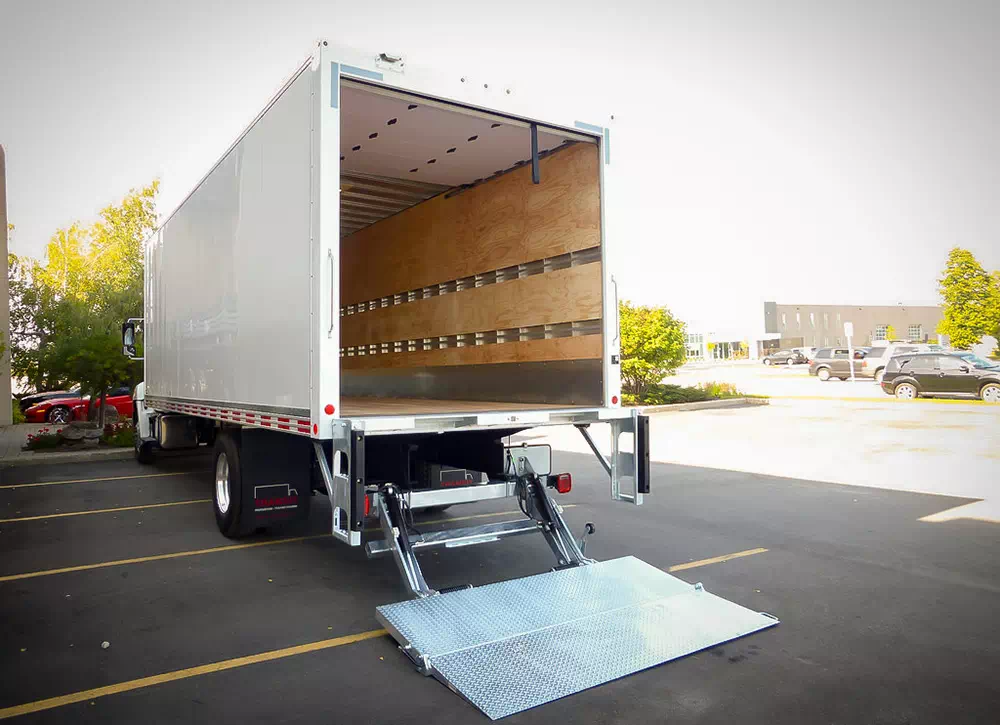
Residential Pickup / Residential Delivery: As we mentioned before, most standard LTL pickup and deliveries are considered business-to-business shipments. There is an additional charge when the pickup or delivery is at a residential location. Oftentimes the carrier must take smaller trucks into the residential areas due to street size. The carrier will also call to set up a delivery appointment before taking the freight out for delivery, to ensure that the consignee is home. Sometimes, a residential pickup or delivery will need a liftgate to assist the driver in getting the freight from the ground to the truck. The charge for this pickup or delivery service varies from carrier to carrier (as all accessorial charges do), but anywhere from $75 to $150 can be a normal rate.
Notify Consignee: On standard LTL shipments, deliveries are handled on a first come, first serve basis. This means that once an item arrives at the destination terminal, it will automatically be loaded on to a truck for delivery. Delivery to the consignee will occur sometime that next day, depending on the driver’s route. But what if a shipment needs an appointment for delivery? Or even just a “heads up” to confirm plans to receive freight? This service is pretty self-explanatory as you’re paying for the carrier to call (notify) the receiver (consignee) to let them know their freight is ready to be delivered at the consignee’s convenience. It’s important for the consignee phone number and contact to be visible on the BOL used at the time of pickup, otherwise the carrier will not know who to call to set up the delivery appointment.
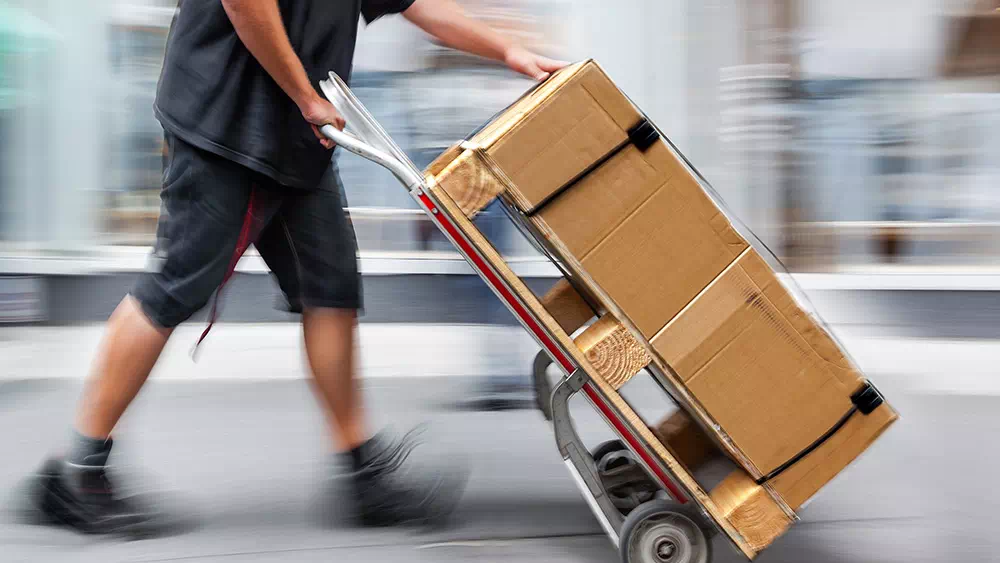
Inside Pickup / Inside Delivery: The name of these services can be a bit misleading to the shipping beginner, so we’ll provide a bit of context and clarification. We’ve already discussed that a standard LTL shipment is dock-to-dock, business-to-business. But what if you don’t have a dock? Well, generally those without a dock will need a liftgate to get the freight off the truck. Once it’s on the ground the carrier has completed their standard delivery, and they’re free to leave and continue to their next drop or pickup.
This means if you don’t have a forklift or some other way to move your shipment, you’ll have to break down the pallet or crate and move the pieces into your warehouse or shop manually. With Inside Delivery / Inside Pickup, the driver will take the freight into your garage, store, shop, etc. As opposed to sitting out on the curb, your freight will be more accessible and easier to unpack/unload. Inside delivery/pickup is often paired with residential deliveries and pickups as well, though there is a caveat that needs to be noted. Because of liability issues, a freight carrier cannot actually enter your house. LTL shipping is not a moving company, so they will not be taking your freight into your living room or kitchen. This would require the use of a “white glove service,” and is outside of the LTL shipping industry. What they can do with this service is take the freight up your driveway to your garage or porch. This ensures that your freight is not sitting on the curb with no way to move it.
Hazardous Materials: When freight is considered hazardous, for obvious reasons, special handling needs to be employed. This means that hazardous freight needs to be moved with other hazardous material as opposed to non-hazardous freight. The driver will also need special permits to handle and drive the freight.
Trade Show Pickup and Delivery: To move freight to and from a trade show requires a series of special actions. For many trade show pickups and deliveries, drivers will be required to wait in line to pickup or unload their freight. Because of this delay, the carriers need to coordinate their driver’s routes to account for these hold-ups, and this is the primary reason for this additional charge to be applied to your LTL shipment.
Limited Access Pickup and Delivery: Similar to a residential charge, limited access applies to any location that is outside of a normal shipping business. This charge includes locations such as: Government buildings, schools, universities, prisons, farms, ranches, airports, and shipping ports (among others). This service will also need to be included for any location that is literally “limited” in its accessibility. This includes unusually small parking lots, guard gates, fenced locations, etc. Any place that it would be difficult to maneuver a 53ft. or 48ft. semi-truck will need to be considered for Limited Access. This charge can be very subjective, so it’s best to ask the carrier or your broker if the location will be limited access if you think there might be a chance.
Extreme Length: This service is needed when a single piece is over the standard LTL limitations of space (12 linear feet). Different carriers vary on their “limits,” so check with your broker if you have an extreme length piece. Keep in mind if you have two pieces that are extreme length, you’ll need to acquire a volume quote to ensure your shipping cost is correct. This charge does not cover for a volume shipment.
Guaranteed Delivery: One of the golden rules of LTL transit is that the transit time of a standard LTL shipment is always measured in “estimated” days. This means that if a shipment is a day (or even week) late, the customer will still be responsible for the charges, regardless of the tardiness of the delivery. Though delayed freight can be frustrating, this is an industry-wide standard that applies to all LTL carriers. But what if you have something that absolutely must be delivered by a certain date? You can pay for this service, “guaranteeing” that this freight is delivered on time. If the freight does not deliver by the agreed time, the carrier will not charge for the shipment.
When guaranteeing a shipment, you’ll always need to confirm that the carrier offers the service. They will check the distance, time limits, and other factors before giving you a confirmation that they offer the service for your particular shipment. A standard guarantee applies to delivery before 5pm, however some carriers offer a 12pm delivery guarantee for an additional cost. Keep in mind that a guarantee service only applies to standard LTL shipments. This excludes volume shipments, residential shipments, or any shipment that requires an appointment for delivery.
Sort and Segregate: This charge is often applied for deliveries to grocery stores or warehouses that require the carrier to unload the freight, unpack, and then sort the goods accordingly. The charge varies between carriers, so confirm with your broker or carrier if you need an accurate accessorial quote.
ABOUT FULL TRUCKLOAD SHIPPING
UNDERSTANDING FTL SHIPPING QUOTES
Unlike LTL shipments, there is not a system or set of parameters that can be applied to “standardize” truckload shipping. This lack of system lends to a more fluid shipping industry than that of the LTL variety, and allows for more negotiation between broker, carrier, and driver.
The first step in acquiring a full truckload quote is assembling information, some of which is information also needed for a typical LTL shipment. For an accurate truckload quote you’ll need:
- Origin and destination zip codes, as well as the estimated date of pickup.
- Total piece count and weight including dimensions of the pieces and if they are stackable.
- Commodity being shipped including the freight value. Unlike LTL, a freight class is not used in full truckload shipping, and pricing is subjective and dependent on value and insurance.
- Equipment being used for shipment (see Truckload Equipment Types below). If you’re unsure on the equipment needed, speak with one of our representatives for advice.
Once all the information is compiled, it’s time to take it to a freight broker. From there, the broker will post the load on a series of Internet LOAD BOARDS. Carriers monitor these load boards across the country. A good broker will also reach out to their network of trucking carriers and operators as more options allow for better pricing and service. Price negotiations will commence between the broker/shipper and the carrier, and depending on availability of drivers, freight size, distance, and local freight market, a price will be agreed upon.
Full truckload price negotiation and carrier vetting are the primary reason we suggest using a qualified freight broker when it comes to shipping full truckload freight. In order to get the cheapest rates from the carrier, certain information is needed that can only be provided by a freight professional. Also, freight professionals have the experience and tools to properly vet and secure the carrier. Making sure the carrier has the proper registrations, operating authorities, and insurance are critical in this process. If your freight moves with a carrier who does not have these things in place then you, your freight, and fellow motorists are at risk.
Once the carrier is “locked in” to the shipment, normal shipping protocols kick in, similar to those in the LTL world as discussed in previous chapters. The only difference being that in truckload, the shippers usually produce their own BOL. This BOL will be given to the driver when he arrives to pickup the freight. The freight will be loaded into the truck, given a PRO number, and then will be considered “in transit.”
Unlike LTL shipping, a full truckload shipment will remain on the same trailer for the entirety of its transit. This differs wildly from standard LTL shipments, where terminals are used to move the freight from shipper to consignee. With a truckload shipment, once loaded, the freight will not be unloaded until its final destination. Even if the transit time is more than one day, the freight will remain on the same trailer.
When it comes to protecting your full truckload freight, the process is similar to LTL shipping. Carriers will be required to carry a certain amount of insurance (usually around $100,000) and then if damage does occur the carrier will be responsible for covering any issues. You can also buy third party insurance, just as in LTL, and the third party will pay out the claim and be compensated from the carrier.
The term “equipment” means “what kind of truck” in the shipping industry. Similar to the air travel industry, these different pieces of equipment are used for different types of freight shipments. Apart from their uses, their costs are also different.
REEFER TRUCKS:
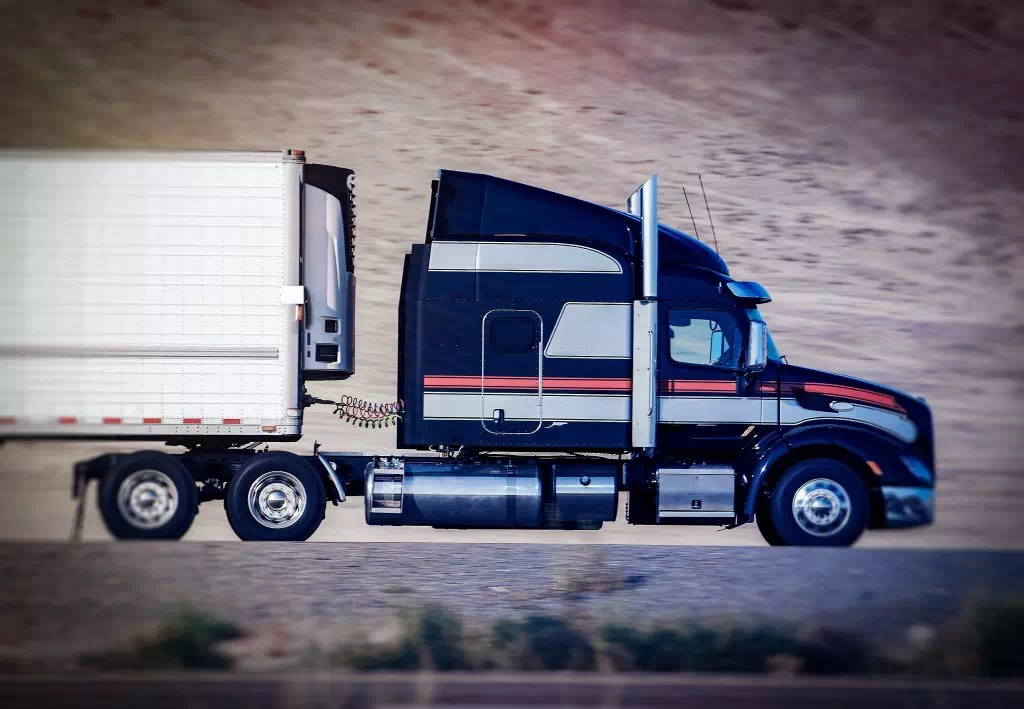
Reefer trucks are used for shipments of temperature-sensitive goods, whether the items being shipped need to stay warm, cold or frozen. They are used to haul many different types of products including produce, photography supplies, chemicals, computers, human blood, plasma, medical supplies, and meat. This type of truck is found in both 53′ and 48′ lengths. The typical temperature range in these trailers is from -10° F to 75° F. Although a common piece of equipment, they can sometimes be difficult to source as demand shifts throughout the year, moving the equipment into different markets, and limiting availability. Pricing will typically be more expensive than a dry van as you’re also paying for the fuel to run the motor on the trailer, which regulates the temperature.
DRY VANS:
The most common piece of equipment is the dry van. A dry van is your normal 53 ft. or 48 ft. semi-truck. It is enclosed, not heated or cooled, and has swing doors in the back for loading and unloading freight. If you’ve ever driven on an interstate, you’re familiar with this sort of equipment. A dry van can transport any freight that fits inside the trailer (standard dimensions are 102 in. wide and 110 in. high), or 26-28 standard sized pallets. The typical maximum weight these trailers can scale is 45,000 lbs., but this will vary from carrier to carrier depending on preferences and trailer type.
FLATBED TRAILERS:
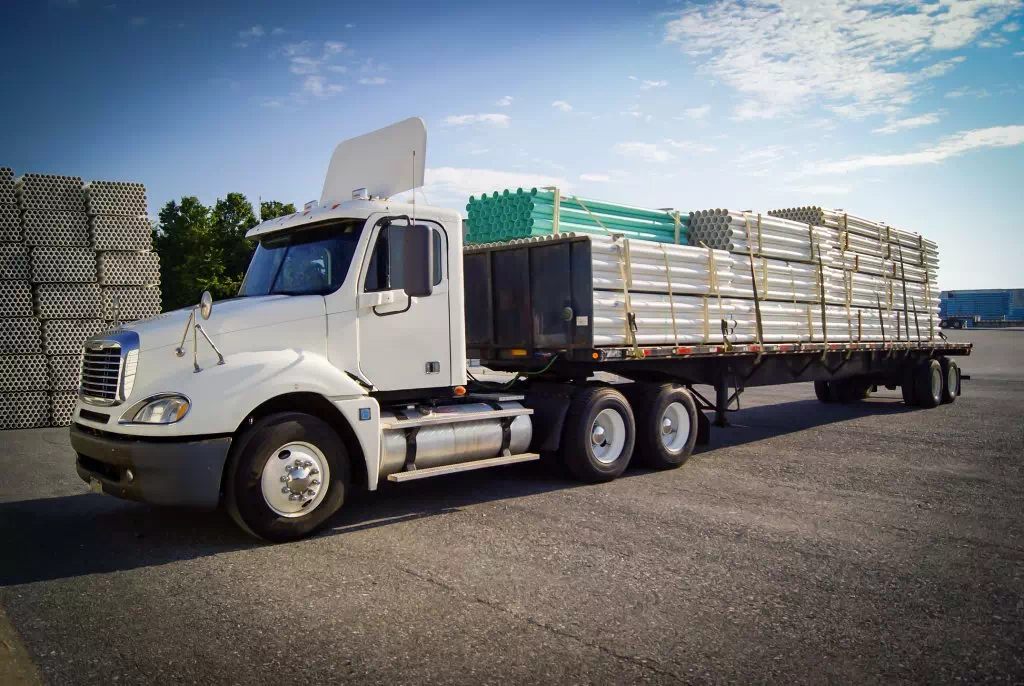
Flatbed trailers typically ship items that are large or wide, items that need to be loaded by a crane, or from the side with a forklift. The trailers most commonly used are 48 ft. in length, with a maximum weight limit of 48,000 lbs. Keep in mind that flatbeds and dry vans do not offer the services of a liftgate. Another important aspect to consider when it comes to shipping on flatbed trailers is the security of the freight once it’s on the trailer. Apart from being subject to the elements, you’ll need to make sure your freight is properly secured to the deck. Carriers often offer straps and tarps to insure that your freight is as secure and safe as possible.
Step Deck Trailers:
Double Drop Trailers:
Double drop trailers are used mainly for over sized freight. The lower deck height, lets you load products that are taller then 10′ tall. There are two types of double drop trailers, conventional or fixed neck, and removable goose neck.
- Conventional Double Drop Trailers have fixed drops on the front and ends of the trailers. Since the beds of these trailers are lower than flatbed trailers, they’re often the optimal choice for stabilizing tall loads. However, with this type of trailer, cranes are usually used to load cargo that can’t be driven on. They can carry a maximum freight weight of 40,000 pounds (with two axles) and up to 80,000 pounds with extra axles.
- RGN or Removable Goose Neck Trailers are great for carrying long and tall freight. A double drop RGN trailer is often referred to as a “detach,” because the front has a goose neck that detaches, allowing the trailer to be lowered to the ground to create a ramp. For this reason, loads are typically driven onto the trailer, like trucks and other motorized equipment. RGN trailers can go up to 20+ axles, so they can carry freight up to 150,000 pounds.
Tanker Trucks:
A Tanker Truck or Tank Truck, is a motor vehicle designed to carry liquefied loads, dry bulk cargo or gases on roads. The largest such vehicles are similar to railroad tank cars which are also designed to carry liquefied loads. Many variants exist due to the wide variety of liquids that can be transported. Tank trucks tend to be large; they may be insulated or non-insulated; pressurized or non-pressurized; and designed for single or multiple loads (often by means of internal divisions in their tank). Tanker trucks are described by their size or volume capacity.
Large tanker trucks typically have capacities ranging from 5,500 to 11,600 US gallons, and are used, for example, to transport gasoline to filling stations. They also transport a wide variety of other liquid goods such as liquid sugar, molasses, milk, wine, juices, water, diesel, and industrial chemicals.
Smaller tanker trucks typically have a maximum capacity of 3,000 US gallons and are typically used to deal with light liquid cargo within a local community. A common example is a vacuum truck used to empty several septic tanks and then deliver the collected sludge to a treatment site. Another common use is to deliver fuel such as liquefied petroleum gas (LPG) to households, businesses and industries. The smallest of these trucks usually carry about 1,000 US gallons of LPG under pressure. Typically LPG tank trucks carry up to 3,499 US gallons of product (usually liquid propane) on a 2 axle bobtail truck. Trucks carrying 3,500 US gallons or greater require a 3 axle truck (tank wagon).
Hopper Trailers:
A hopper trailer is a trailer pulled by a semi tractor and used to haul bulk commodity products (such as grain). These trailers are used extensively throughout the United States to transport agricultural products as well as any other commodity that can be hauled in bulk and loaded and unloaded through the trailer.
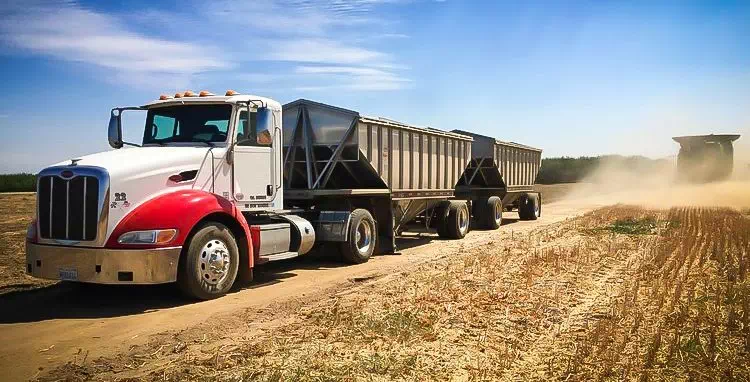
Hopper trailers typically feature a rolling tarp on the top of the trailer, to enable easy loading of the product to be transported, and also offer protection during transport. They utilize two hoppers on the base of the trailer to unload the product, one servicing the rear half of the trailer, the other the front half. The output of these hoppers is usually controlled by a sliding plate on the base of the hopper, controlled by a user-operated crank handle.
A hopper trailer is used in conjunction with various other pieces of agricultural machinery to complete the harvest of a field. Combine harvesters or similar unload the harvest into grain carts, which in turn unload their load into a hopper trailer, for long distance transportation. The trailers are then unloaded into low-profile grain augers for transportation to, and long-term storage in, grain bins, also known as silo’s.
Intermodal Trailers:
Intermodal Trailer means a closed van semi-trailer that is either owned or controlled by a railroad, leasing company, motor carrier, or private entities such as shippers and intermodal marketing companies. Motor carriers transport these trailers to and from intermodal rail and marine terminals, depots, container yards, etc.
Power Only Trucking:
With power only trucking, a semi-truck (the powered unit) and driver are hired to transport your semi-trailer (the unpowered unit) and products to your specified destination. The power only cab service isn’t only limited to a single trailer shipment, this service can provide a team of drivers depending on load size, number of trailers, and logistical needs.
Drayage Trucking:
Drayage is defined as the transport of goods over a short distance, and it is often part of a longer overall move, such as from a ship to a warehouse. In freight forwarding, drayage is typically used to describe the trucking service from or delivery to a seaport, border point, inland port, or intermodal terminal with both the trip origin and destination in the same urban area. Drayage is a key aspect of the transfer of shipments to and from other means of transportation. The term drayage is also used for the fee paid for such services.
Hot Shot Trucking:
Hot Shot and Expedite often get used interchangeably, which sometimes leads to confusion. Currently expedite refers to vans, straight trucks and T/T’s delivering time sensitive freight. With Hot Shot trucking there are no set lanes and the trucks are on standby for immediate response. A true Hot Shot load has four characteristics: truck type, urgency, freight type, and delivery area.
- Truck – A Class 3-5 truck hauls Hot Shot loads. Trucks like these are commonly a U.S. manufactured ¾ to 1 ½ ton pickup or cab and chassis rig. They’re made to handle weight and connect to a flatbed or trailer.
- Urgency – Hot Shot freight is defined by its need to deliver fast. It’s rarely a planned shipment. It usually originates out of a sudden, urgent need for parts or equipment at a specific location.
- Freight – The urgency of true Hot Shot trucking typically limits it to a single customer and the freight travels on a flatbed trailer.
- Delivery Area – Hot Shot loads don’t have lanes. They go from point-to-point within a specific local or regional area. Due to their urgency, freight shipping nationally wouldn’t qualify as Hot Shot.



